Know Your Push: Understanding the Different Push Notification Devices and How to Use Each Effectively
Published on November 19, 2024/Last edited on November 19, 2024/6 min read
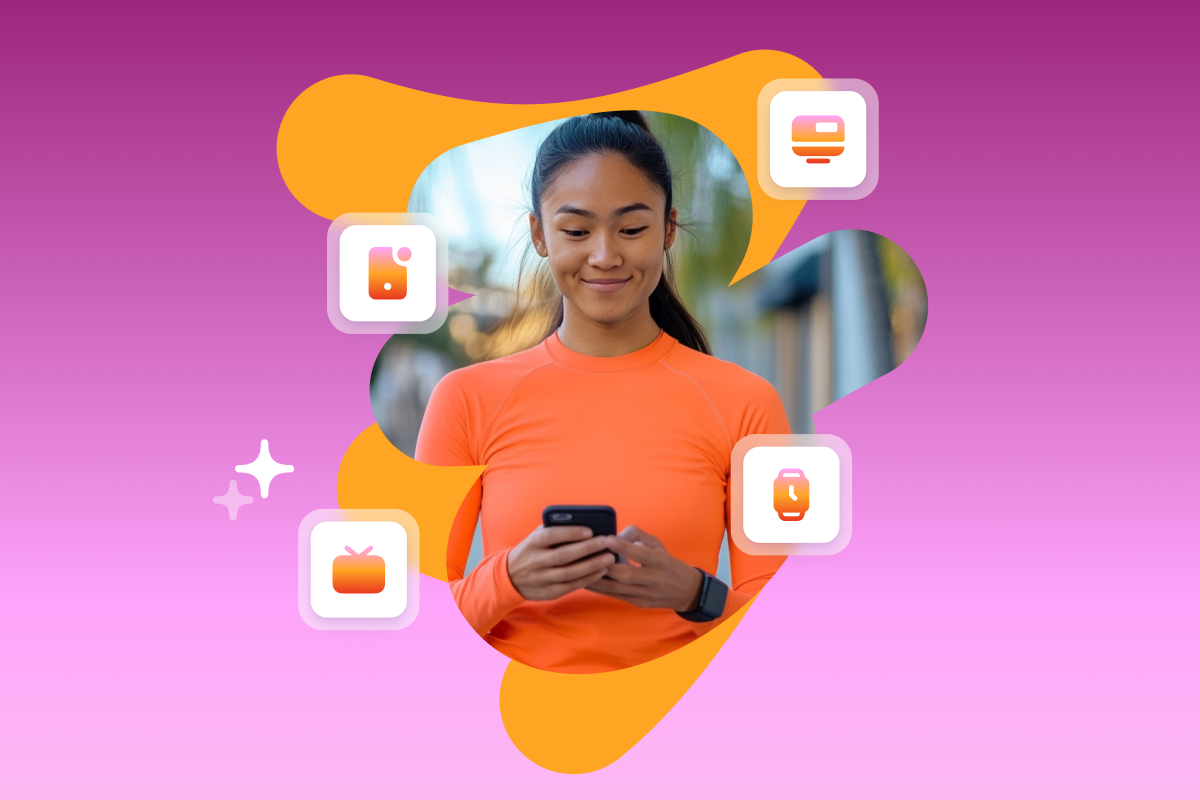
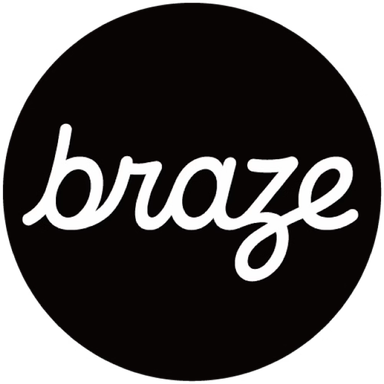
Team Braze
BrazePush notifications are important for marketers looking to increase customer sessions, purchases, and retention. While mobile push notifications are most likely already on your radar and a key component of your brand’s cross-channel customer engagement strategy, there’s a world of ways to use push beyond connecting with smartphone users, from web push notifications to augmented reality push notifications.
Here we’ll review the main devices that support push notifications and offer an overview of how these different types of push notifications work and when to use each.
Six Types of Push Notifications
Mobile Push Notifications
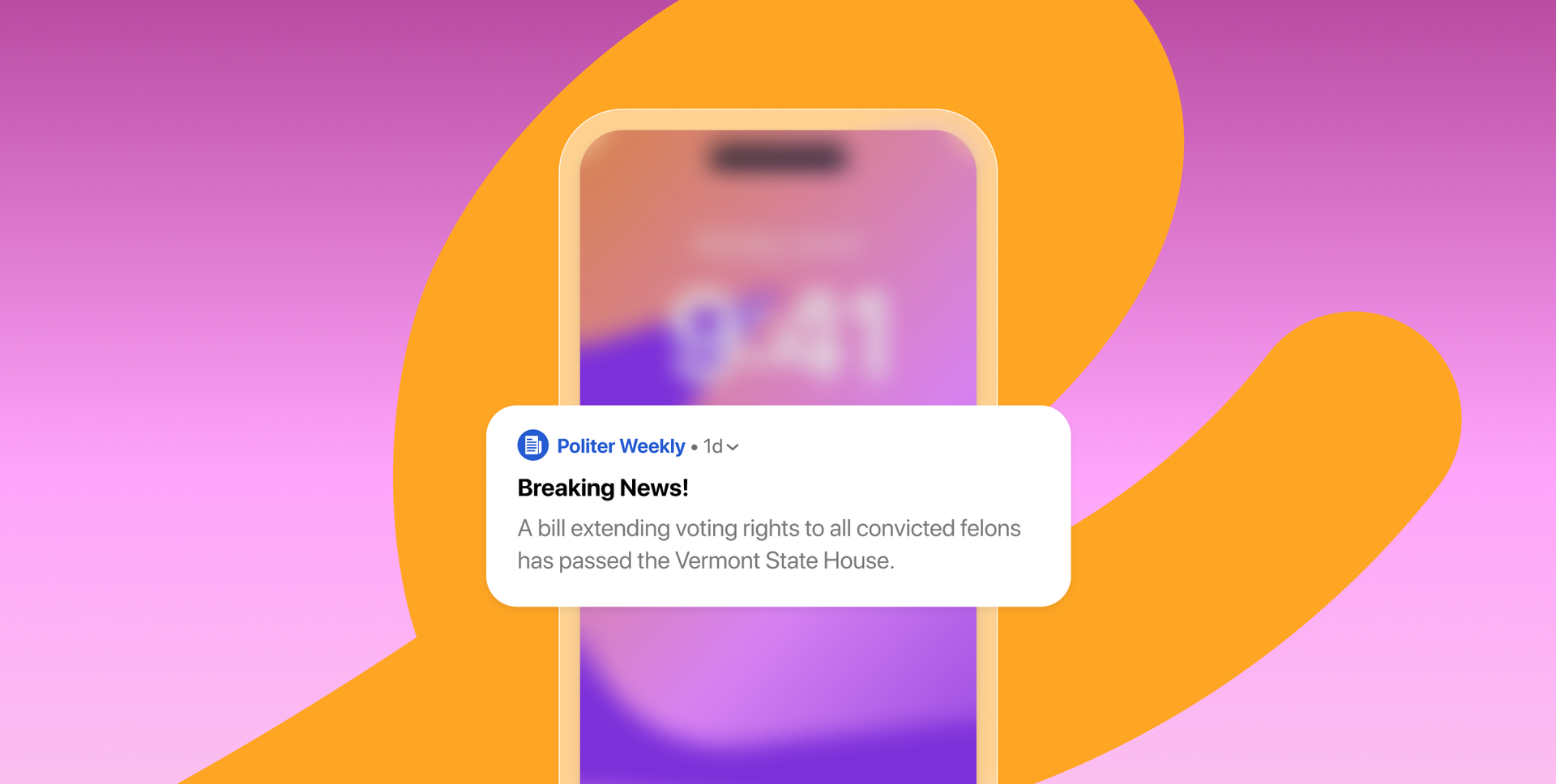
The original push notification that’s been around since 2009, mobile push notifications are short, catchy messages marketers can send to app users who’ve opted into receiving updates from their brand. This is the most popular device—most people have smartphones and always have them near.
Web Push Notifications
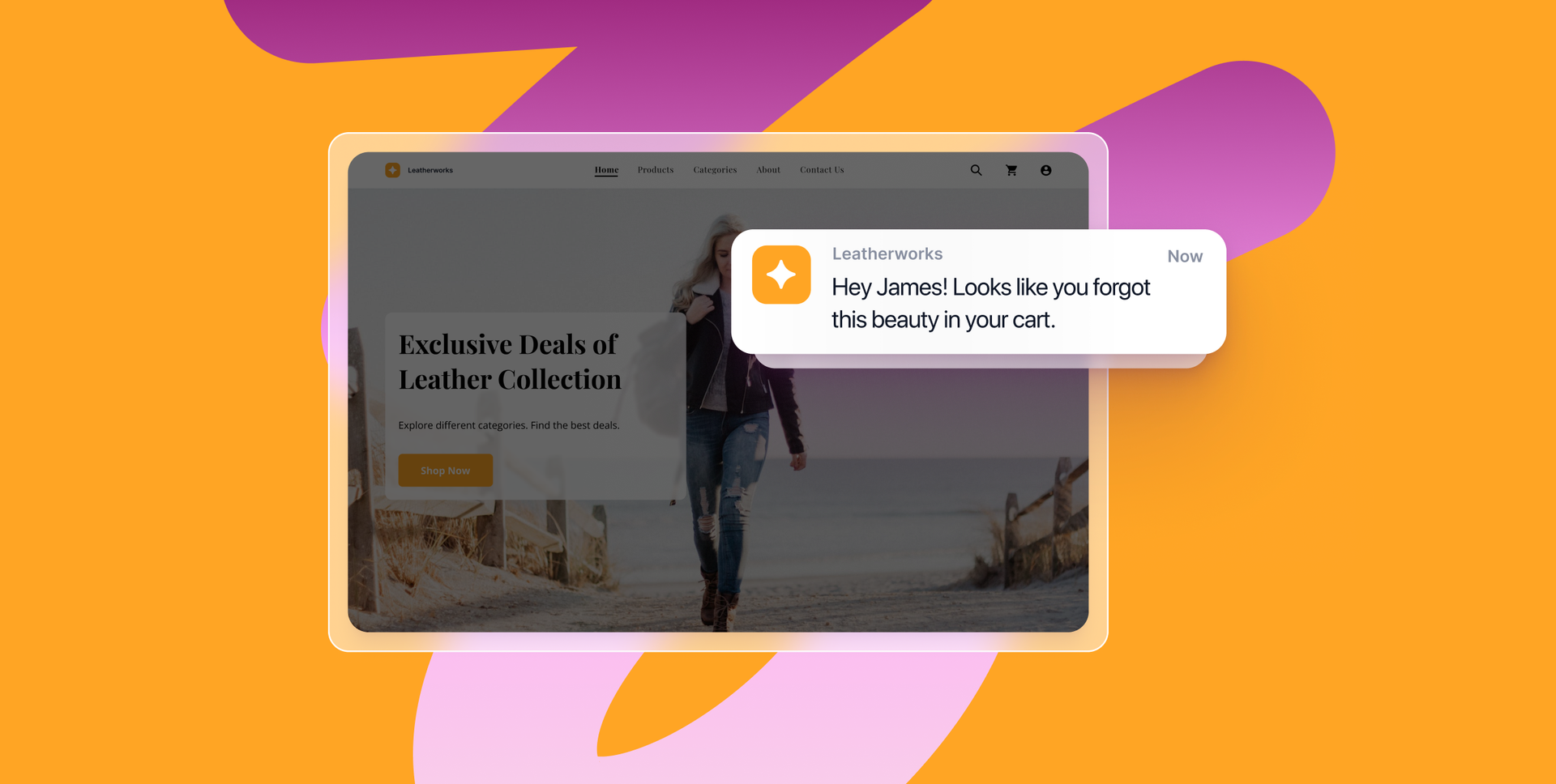
The web-based counterpart to mobile push notifications, web push notifications allow brands to send messages to customers on their computers even when they’re not currently visiting their website (as long as they’ve opted into receiving updates from the company).
Connected TV and Device Push Notifications
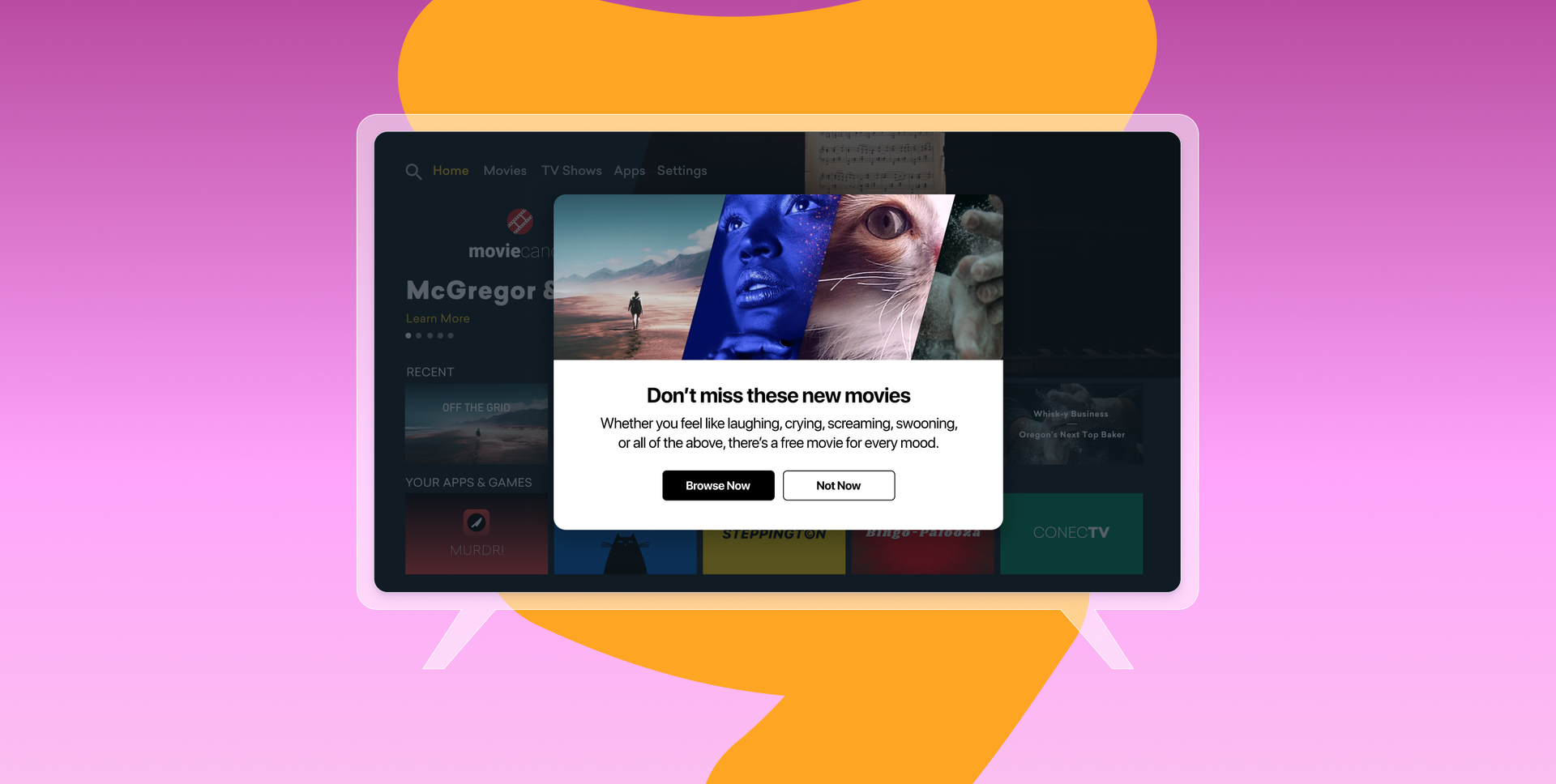
Connected TV and connected device notifications get sent to customers via one of two ways—on-screen via devices like Android TV, Fire Kindle, Fire TV, and other smart TVs and systems and via second-screen notifications. Second-screen notifications are push notifications delivered on mobile phones and other devices, using data from connected TV platforms to drive engagement.
Wearables Push Notifications
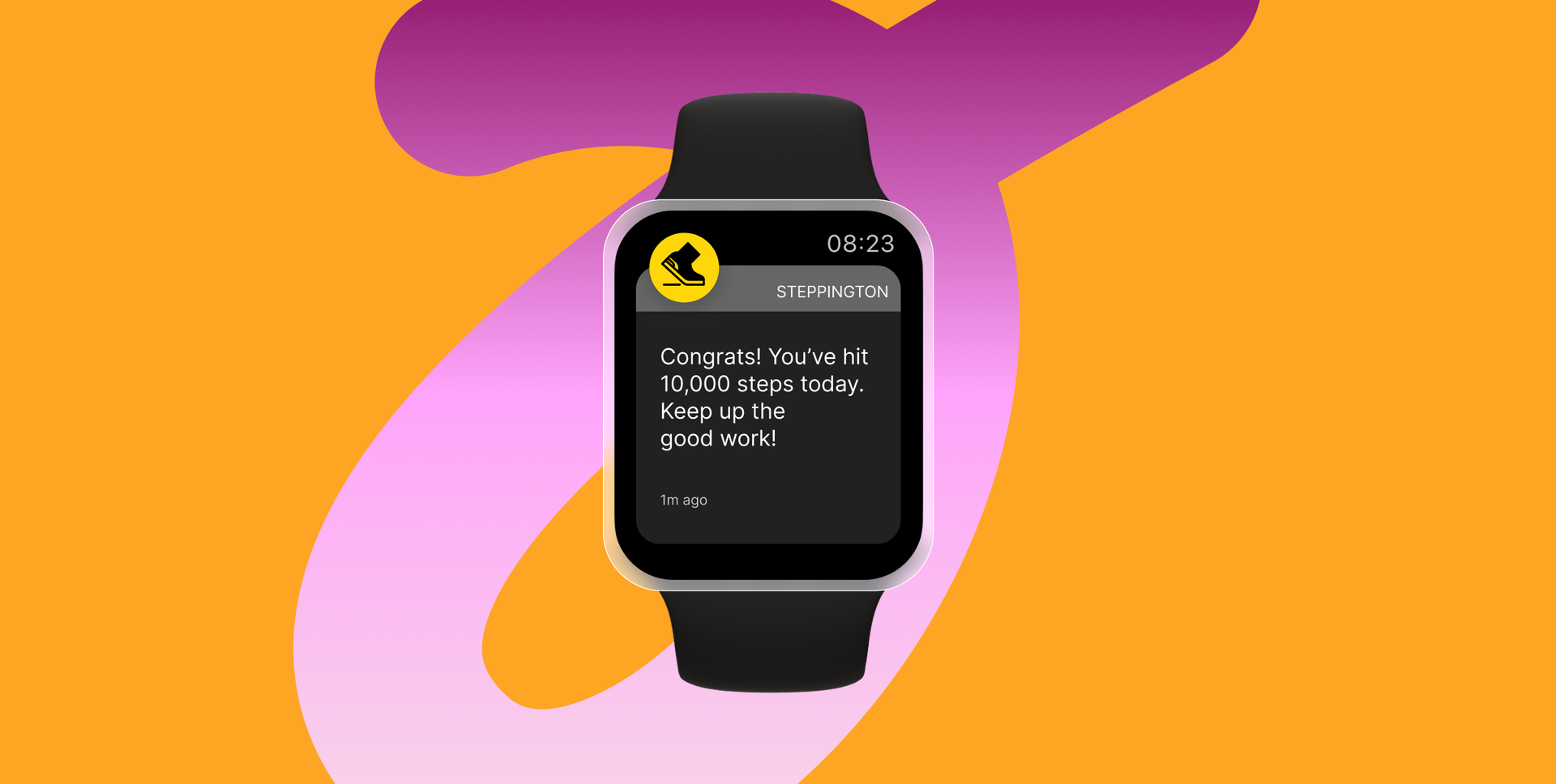
As the name suggests, wearables push notifications are push messages that get sent to users on their wearable devices. This happens when customers sync up their smartphones to their smartwatches, fitness trackers, or other wearables so they can get updates from their favorite apps across devices, staying in the loop as they’re on the go. But not every push notification designed for mobile push should be sent to wearables users who have opted into receiving updates. For one, the screen size is smaller. Second, customers may only quickly glance at these updates while they’re on the move. And lastly, because wearables have more limited functionality, the user experience of wearable notifications inherently needs to be more simplified than app, tablet, or web-based notifications. It’s a smart idea for marketers to segment wearable users to receive more targeted message variants that are optimized for smaller displays and keep timing and frequency considerations in mind, since these notifications are likely to feel more intrusive for customers. Wearable push notifications are an especially great tactic for Health and Wellness brands as many people use smart watches to track their workouts and fitness goals.
Live Activities
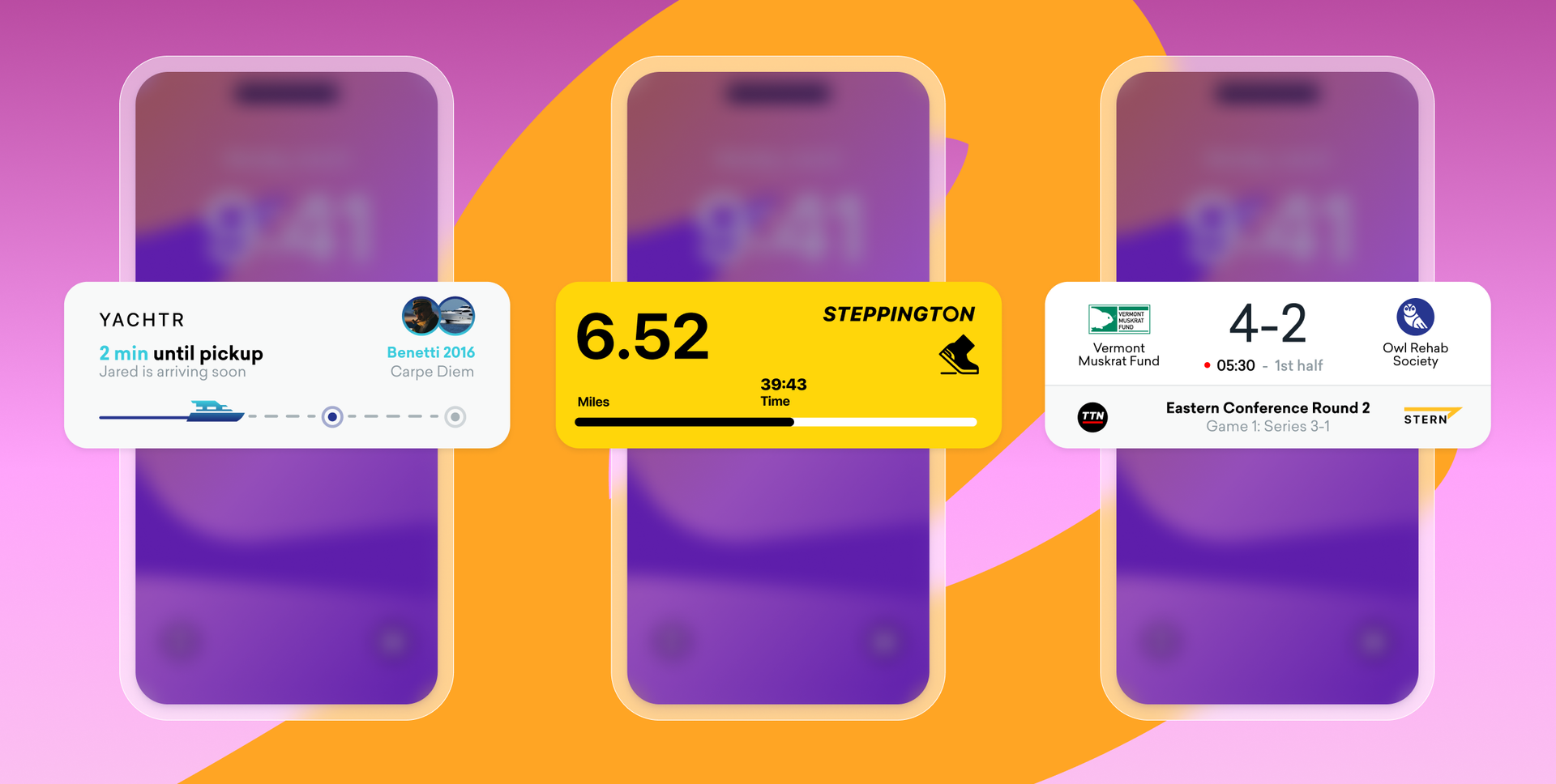
First debuted by Apple in 2022, Live Activities is one of the newest iterations of the ever-evolving, incredibly versatile push notification. Unlike traditional push notifications, Live Activities are persistent notifications on the iPhone or iPad lock screen that constantly update with new information.
Live Activities are handy for keeping mobile and tablet users updated in real time about things like the length of an in-progress workout session, the current score of a game as it’s happening, or the time remaining until the estimated arrival of a ride-sharing app driver. In the past, marketers might have sent multiple static mobile or tablet push updates throughout the steps involved in something like an eCommerce or takeout delivery, but now with dynamically updating Live Activities, users can see what’s happening in real time.
AR, VR, and Spatial Computing Push Notifications
It’s the dawn of a new era for push, with the arrival of the next frontier of this multifaceted channel: spatial computing. Spatial computing platforms like Apple’s first-ever 3D camera Vision Pro and companion operating system visionOS, which arrived on the scene in early 2024, build on earlier interactive technologies like virtual reality (VR) and augmented reality (AR) capabilities.
Brands with existing iOS apps can extend their digital experiences beyond mobile into the realm of spatial computing, either by developing Apple Vision-specific apps or leveraging current mobile apps that can be ported over to visionOS. Through the Braze customer engagement platform’s Swift iOS SDK, brands can connect with audiences on Vision Pro devices in ways that are similar to how they engage with customers via their mobile devices, smart devices, tablets, and computers.
While this is a comprehensive list of the different types of push notifications that can be sent across a range of devices, there are even more types of push notifications that vary by feature.
Push Lineup: When to Use Each Type of Push Notification
All types of push notifications are best for high-urgency, simple messages designed to push customers back to interacting with your brand’s website, app, in-person locations, content, or other touchpoints.
- Mobile push notifications: Use these to connect with smartphone users and get them to engage with your mobile app.
- Use case: Using a geofence, you can grab users’ attention when they’ve arrived at their hotel or once they’ve landed in a new country
- Web push notifications: Use these to connect with website visitors who’ve opted into receiving updates from your brand. Like their mobile counterparts, these messages encourage users to engage with your brand even when they’re not actively visiting your website.
- Use cases: Driving cart completions with alerts about price drops, back-in-stock or sales
- Connected TV and device push notifications: These can be delivered in-device (via Connected TVs or smart devices directly) or via mobile or tablet-based push notifications to draw viewers back to watching your content and engage with your brand’s Connected TV or smart device app.
- Use case: Let your viewers know the next episode is available or if a show they will want to watch is coming soon (so add to their watch list!)
- Wearables push notifications: Use these more sparingly than mobile or web-based push notifications to send short, timely updates to users as they’re on the go. Remember, this isn’t the place to deliver overly complex campaigns.
- Use cases: Great for workout progress or when a ride share is arriving
- Live Activities: These are ideal for keeping customers in the loop as an event is taking place, such as a sports game, a delivery, a political debate, or pre-departure flight updates.
- Use case: Let users track their food delivery or ride share journey.
- AR, VR, and spatial computing push notifications: Use these messages to extend your brand’s presence on existing digital channels and engage with customers while they’re using AR, VR, or spatial computing devices.
- Use case: As gaming and entertaining are big on these devices, notify players a new game level is available
Key Takeaway
From mobile and web push notifications to innovative options like Live Activities and spatial computing notifications, each device offers unique opportunities to connect with users. By leveraging the right type of push notification for the right context—whether it's delivering timely updates on a sports game or engaging customers through augmented reality—brands can create impactful interactions that resonate with their audience.
Related Tags
Releated Content
View the Blog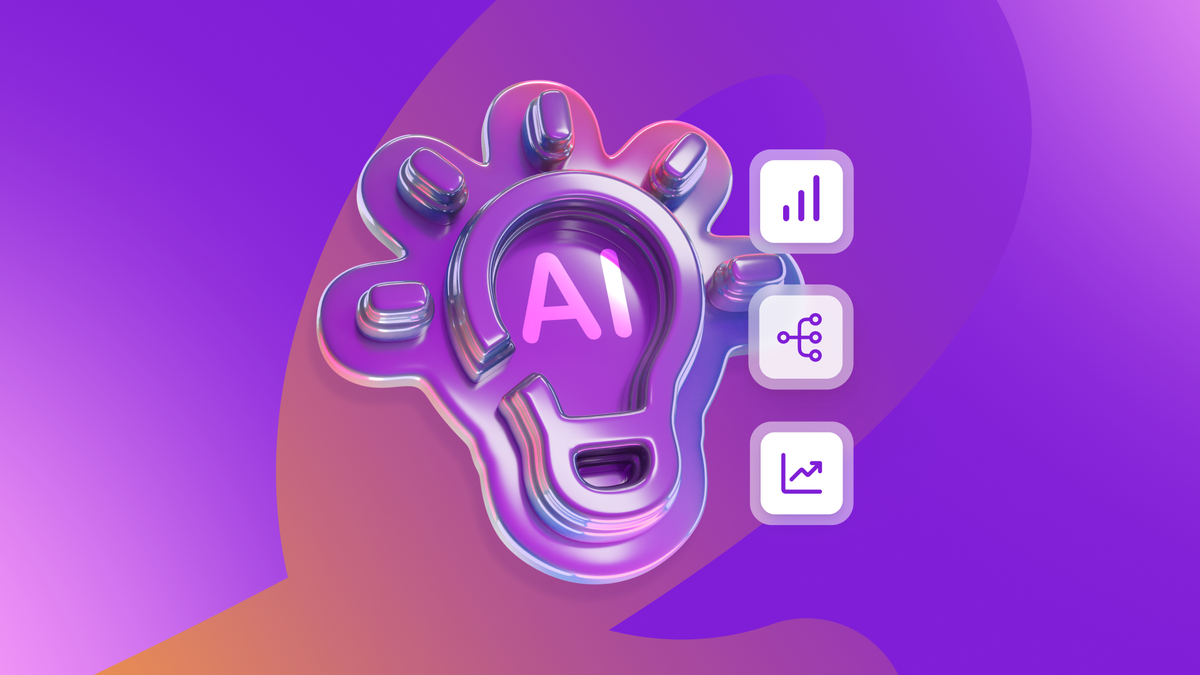
Enterprise generative AI: Transforming data, decisions, and customer experiences

Team Braze
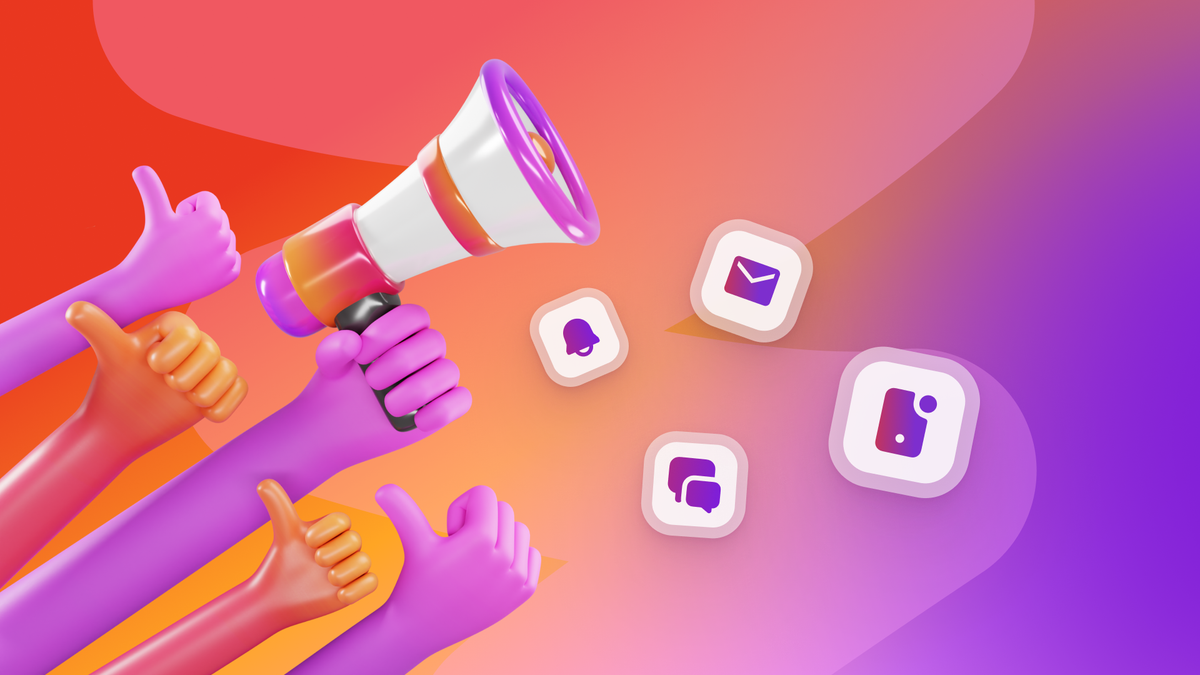
Omnichannel personalization: Delivering consistent, connected customer experiences

Team Braze
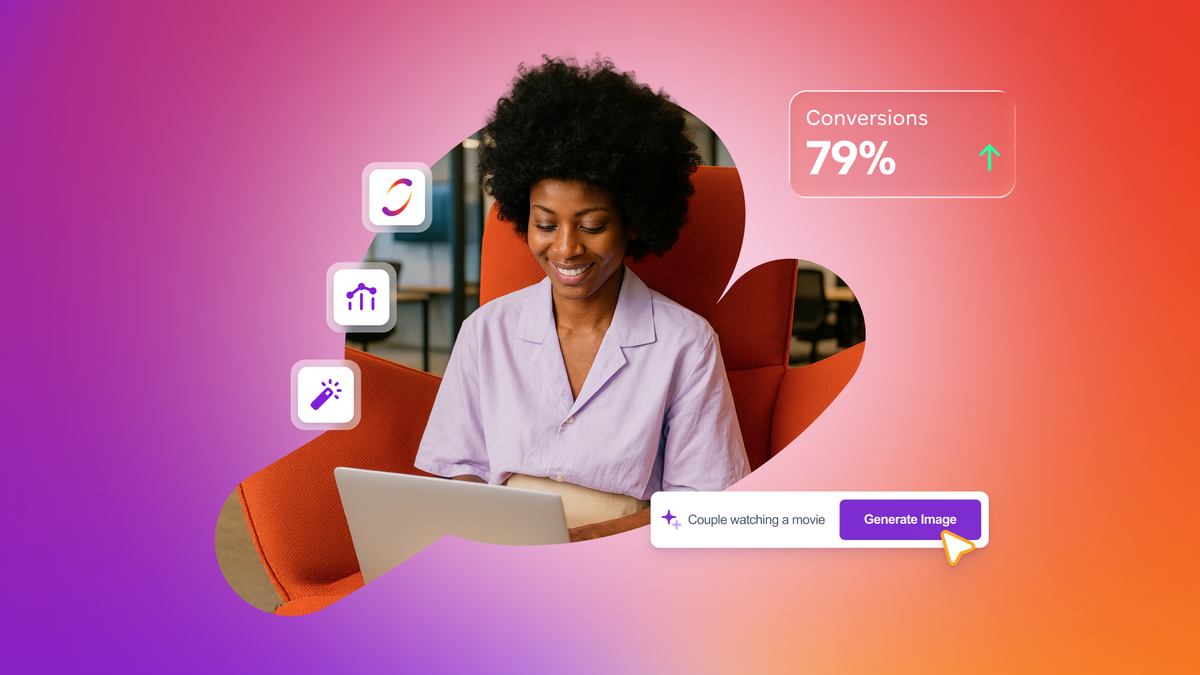
Are you AI-savvy enough to survive? A wake-up call for CMOs
